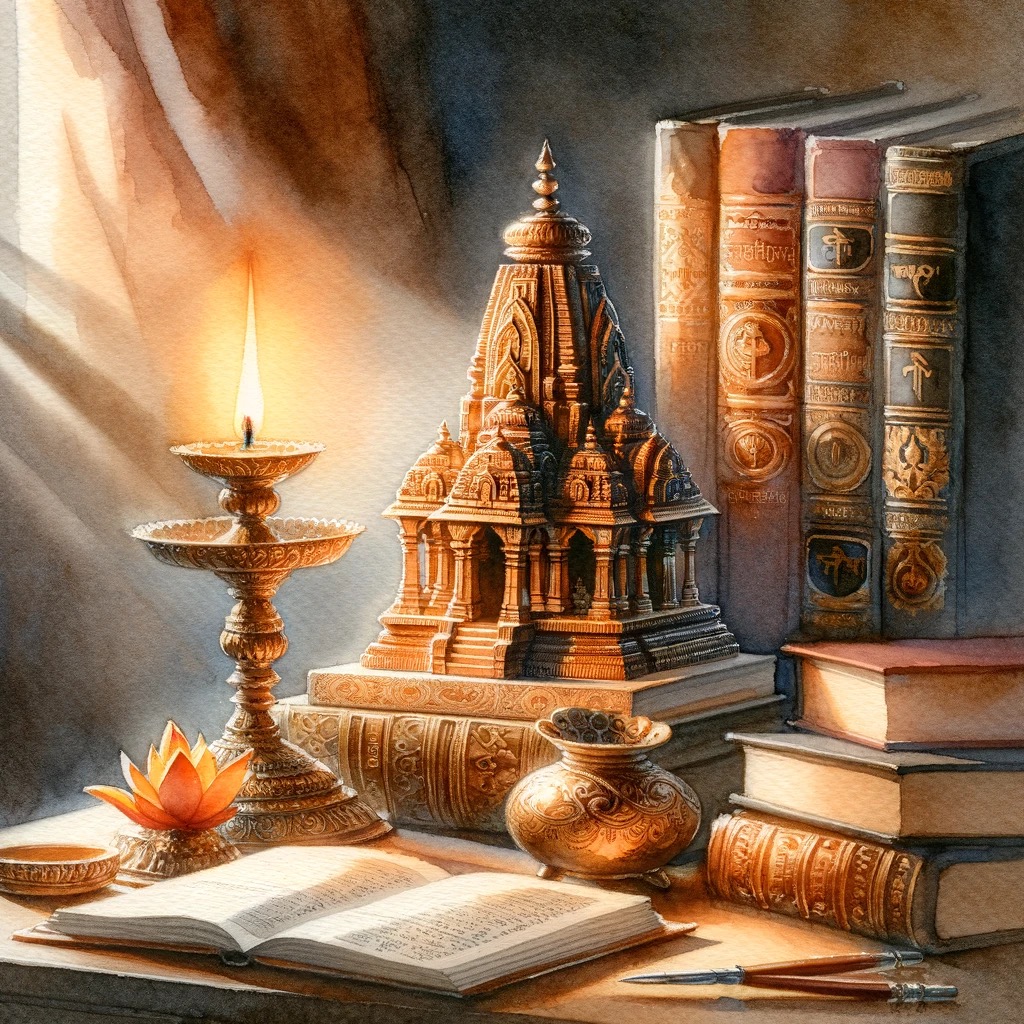Introduction to Hindu Iconography 3.0
Following the resounding success of two editions of Hindu Iconography by Śrī Ramakrishna Kongalla last 2 years, we bring the third edition of 'Introduction to Hindu Iconography 3.0'. Building on widespread interest and enthusiasm, this course will now be offered in two levels: a Beginner Edition Feb - Mar 2025 and an Advanced Level, tentatively scheduled for May 2025. The beginner level will introduce seekers to the major iconography on temple walls, and provide a glimpse into the cosmic symbolism of Sanātana Dharma. The advanced level will offer a deeper and a more comprehensive analysis of the philosophy, meaning, metaphors and symbolism of our deities, motifs and the creative expanse of our śilpakalā artists, their methods and worldviews.
Overview
सर्वप्रमाणरूपाय साकारतत्त्वमेव च ॥
- Śilparatnakōśa ॥ ३ ॥
Contents
Module 1
Introduction and Evolution of Hindu Iconography
Module 2
Classification of Sculpture of Hindu Devatā with Mudrās (Śarīra, Pāda, Hasta)
Module 3
Description of the Āyudhas and Vāhanas of Hindu Devatā
Module 4
Āditya, Agni, Dvādaśāditya, Navagrahas, Aṣṭadikpālas, Gaṇapati
Module 5
Viṣṇu and His Forms
Module 6
Śiva and His Forms
Module 7
Brahmā, Brahmā Consort, Śakti, forms of Śakti
Module 8
Prominent Visible Elements of Hindu Temples (Praṇāla, Kīrtīmukha, Prabhāvali, Lalāṭabimba, Udumbara, Mandāraka, Dvārapāla, Nadī devatā, Dvājastambha, Vāhana Maṇḍapa, Bhārakas, Thāras, Māruts, Toraṇas, Gaja Siṃha Dvāras, Kapili, Anuprastha, Bhadra, Pātra, Vajra etc)
Session Recordings

Module 1
Introduction and Evolution of Hindu Iconography

Module 2
Classification of Sculpture of Hindu Devatā with Mudrās (Śarīra, Pāda, Hasta)

Module 3
Description of the Āyudhas and Vāhanas of Hindu Devatā

Module 4
Āditya, Agni, Dvādaśāditya, Navagrahas, Aṣṭadikpālas, Gaṇapati

Module 5
Viṣṇu and His Forms

Module 6
Śiva and His Forms

Module 7
Brahmā, Brahmā Consort, Śakti, forms of Śakti

Module 8
Prominent Visible Elements of Hindu Temples (Praṇāla, Kīrtīmukha, Prabhāvali, Lalāṭabimba, Udumbara, Mandāraka, Dvārapāla, Nadī devatā, Dvājastambha, Vāhana Maṇḍapa, Bhārakas, Thāras, Māruts, Toraṇas, Gaja Siṃha Dvāras, Kapili, Anuprastha, Bhadra, Pātra, Vajra etc)
Sign up to view session recordings
These recordings are part of our member-only exclusive access.
Upgrade to get full access to all course recordings and other membership benefits
Key Takeaways
Connect to Bhārata's spiritual core
Learn the what, why and how of Hindu Iconography and how śilpakalā, like every other element in our knowledge system, is a tool on the path of spirituality.
Gain a new lens
This course aims to cultivate a refined eye for aesthetics and foster a deep appreciation for śilpakalā, celebrating the richness of our glorious knowledge systems.
Engage with a circle of seekers
Stay connected and learn from a vibrant peer group of temple enthusiasts who share your passion, wonder and curiosity.
Interactive learning
Through worksheets, handouts, session wise quizzes and real time feedback, reinforce your learnings.
Certificates
Participants will receive certification from Bṛhat upon successful completion of the course.
Who is this course for?
- 1. Students and working professionals of all disciplines who appreciate saundaryabodha (knowledge of beauty and aesthetics).
- 2. Parents and teachers who wish to pass on an informed understanding of śilpa to the next generation.
- 3. Anyone looking to acquire proficiency in Indian Knowledge Systems through Hindu Iconography
Know your Instructor

Ramakrishna Kongalla
Śrī Ramakrishna Kongalla is an assistant professor of Indian Culture and Heritage at the Indian Institute of Tourism and Travel Management (IITTM), Government of India (GOI), Gwalior. A member of the parliamentary committee of Arts for Central Vista, he is a photographer and photoshopper at heart, working for the Reclaim Temples movement.
His interests include photographing temples across India and digitally reconstructing the ruined temples to their original forms. His specialisation is Heritage Interpretation, and he has travelled extensively in Bhārata, training tour guides across the country. He is also one of the content writers for the IITFC online course by the Ministry of Tourism, GOI, along with serving as a mentor for the Ministry of Education Indian Knowledge Systems (IKS) initiative under National Education Policy (NEP) 2020.
He is active on social media and writes extensively on Temple Architecture and their Iconography with handles like lost_temples & @artist_rama.
Our Draṣṭā online courses are designed to help you in your learning journey
Become a part of the community and engage, share, discuss and deepen your learnings
Interact with the course instructor through live sessions
Access to session recordings and materials


Become a member and dive into the Indic universe
Brhat subscription gives access to exclusive member-only content rooted in the Dharmic worldview.
Starts at ₹500 per month.